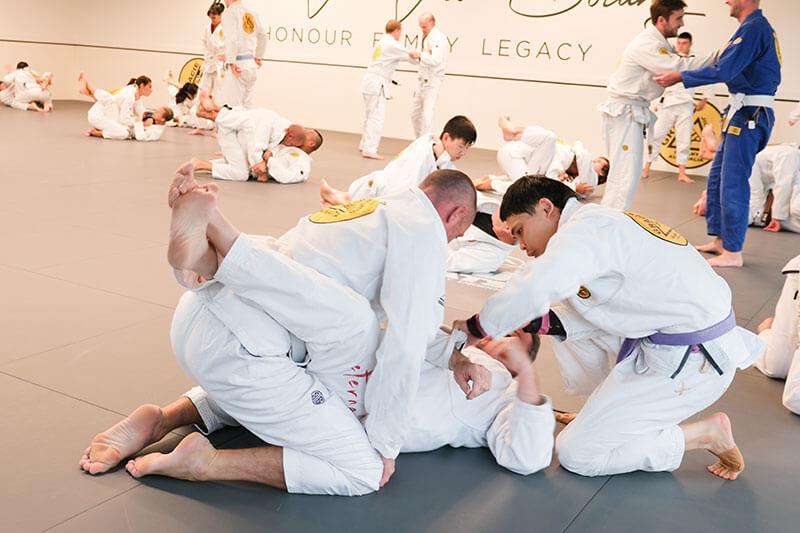Over the last 30 years Brazilian Jiu-Jitsu has exploded in popularity, becoming the foundation of mixed martial arts. But BJJ’s association with MMA has obscured the fact that it’s not just a martial art for adults: Jiu-Jitsu is excellent for children’s self defence too.
Parents in South Sydney have a rich array of choices when it comes to activities for their kids, including rugby, soccer and gymnastics. But BJJ is a unique opportunity, offering children self defence in addition to the benefits of team sports.
Many parents are enthusiastic about signing their boys and girls up to a martial art, but understandably are confused when it comes to which martial art makes the most sense. We at Gracie Botany, a Jiu-Jitsu academy in the eastern suburbs, humbly recommend Brazillian Jiu-Jitsu.
It’s a martial art that’s exploded in popularity over the last 30 years, and continues to grow in Australia and around the world each year. It’s a great full-body workout, it’s perfect for socializing and, perhaps most importantly, BJJ is ideal for self defence.
Here’s why.

Slow down, what’s Jiu-Jitsu?
Brazilian Jiu-Jitsu is a martial art that emphasizes ground fighting and grappling.
Two things make BJJ stand out compared to other martial arts. First, there are no strikes. Your child will not learn kicks, punches or other strikes, and instead will learn grappling and submission techniques.
Second, it allows a small skilled person to defend themselves against a large unskilled attacker. Jiu-Jitsu is all about timing and leverage: Learning how to use someone else’s weight and momentum against them. As a result, Jiu-Jitsu success relies less on strength, power and size than any other art.
Obviously, the implications for children’s self-defence is large. More on that in a second.
It was developed in Brazil in the early 20th century by the Gracie family. Royler Gracie, the son of Jiu-Jitsu co-creator Helio Gracie, started the Gracie Humaita school, of which we are a part – thus our Gracie Botany name.
Why is BJJ good for self defence?
There are many reasons Jiu-Jitsu is excellent for children’s self-defence, many of which don’t apply to other arts.
The most important and most simple point to make is that it’s effective. The efficacy of BJJ was proven in, of all places, the UFC. The first UFC tournaments pit fighters from different disciplines against one another: Royce Gracie, the smallest of the combatants, dominated. The size and strength advantages his opponents had was ultimately neutralized by BJJ technique.
Obviously, the playground is not the UFC. But the concept has been proven. Jiu-Jitsu allows small people to defend themselves against large people.
The second key benefit is that Jiu-Jitsu offers a range of options. If a BJJ practitioner is gripped by a bully, for instance, they have choices. They can disengage and leave the scenario; they can engage and subdue the bully without harming them, or they can apply a submission hold if they deem the situation worthy of it.
That second option is particularly key. Not every self-defence scenario deserves the use of dangerous force. Many striking martial arts teach kids valuable self-defence tools, but these can sometimes be blunt. A spinning elbow may protect your child, but may also cause unnecessary harm to an assailant.
When can kids sign up?
All kids are different, but at Gracie Botany we recommend kids start training at around age 5. This is the age at which kids have the coordination required to participate in drills and Jiu-Jitsu-related games, and the comfort to interact with new people. Note, however, that some kids as young as 3 or 4 have enough of these attributes to start training. Again, five years old is a rule of thumb.
We offer kids classes five days a week, separated into different age brackets. We have tots classes (ages 3-5), kids classes (ages 6-11) and teens (ages 12-15). For tots, training is mostly games that teach kids important movements and BJJ principles. As children get older, and develop better coordination, we start teaching them specific techniques and introduce light sparring. When they become teenagers, they train similarly to adults. Once they’re 16, they can train with adults.
If you’re in South Sydney and are interested in signing your child to BJJ for self defence, come into Gracie Botany for a free trial class.




